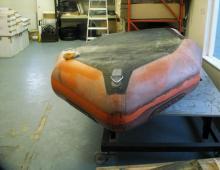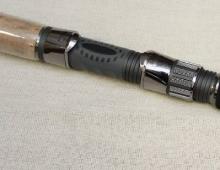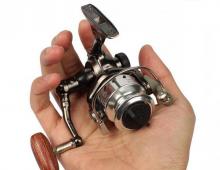How to wash the bloodworm? Washing methods
According to experienced fishermen, there is no better bait than a bloodworm. Small or ruby-red piskuna is used for fishing all year round.
Bloodworm is the best bait
This is a universal bait, it is accepted by any fish. It’s easy to get it, it doesn’t cost anything, it doesn’t require a special tool, and there are dozens of ways to wash bloodworms in large quantities, it’s not even necessary to stock up in advance, you can always find it right on the spot before fishing. And the catch for bloodworms is the most weighty, because the fish is a predator by nature, and it does not suffer from a lack of appetite.
Where is the bloodworm harvested
The bait, beloved by almost all fish, is obtained very easily and at any time of the year. A novice fisherman is more accustomed to buying it at the bird market, and a more experienced fisherman will be able to get it himself. The best place to wash bloodworms are fresh water bodies with stagnant water or a quiet current and a muddy bottom. It is necessary to lift a little silt from the bottom with a bucket or a special ladle, rinse through a sieve or a fine grate. Collect the floating bloodworm and use it for bait. 
How to sort the larvae
Ready-to-eat bloodworms can be sorted into larger and smaller individuals. A trifle will go to feed the fish, and large larvae - on the hook as bait. You will need a jar of water and a fine sieve. Before washing the bloodworm, we place a sieve over the jar and unload the bloodworm cleaned of silt into it. Rinse it out little by little with water. Small worms will go through the pores into the jar, and large ones will remain in the sieve.
If you are not going to use all the bait at once, you need to store it properly. If everything is done correctly, the larvae can last up to three weeks. Of course, you can freeze them, but in this case, the bloodworm is only suitable for feeding, and it is better to take live larvae for bait. From this, the quality of fishing will only improve.
Harvesting bloodworms in winter
Bloodworms can be harvested all year round. And ice fishing is no exception. Of course, summer is full of insects, worms, which can be used to lure fish. In winter, the task becomes a little more complicated. You will have to look for silty areas in shallow water or beat with wormwood and get silt from the bottom, where the bloodworm hibernates. There is a very simple way to wash bloodworms in winter, even a beginner can do it. It is enough to make a fire on the shore, scoop up silt from the bottom with a bucket and put it next to the heat. Very soon, the larvae will begin to float to the surface, and they can be collected. As you can see, it's just an ideal option: there is no need to sort out dirty silt, freeze in cold water or pay for a portion of food in the market. 
If the bloodworm is not urgently needed and there are no devices nearby, there is another possibility how to wash the bloodworm in winter with your own hands, and in large quantities. We take a piece of fish or meat, any trimmings will do, wrap it in gauze or a mosquito-type net, attach a load to it with a rope and lower it to the bottom. You can deliver the next day. Do not hesitate: there will be plenty of larvae on the bait. In addition, there may be many other living creatures here: various swimming beetles, water mites, leeches, shells. They can also be used as bait and diversify the winter menu for catching fish.
Where to store
The bloodworm is well preserved. For its transportation and storage during fishing, it is convenient to use various boxes made of wood or foam, the so-called moth boxes. You can buy them on the market or make your own.
If such bait will be used all during fishing, then no special storage containers are needed. It is enough to dry the food in the air for 20 minutes, spreading it on a newspaper, and then moving it to a bloodworm or any box with small holes. It is advisable to line the bottom with a damp cloth. 
If you have learned how to wash a lot of bloodworms, and did not use it completely for fishing, special storage conditions must be provided. For longer storage use containers made of wood and foam. The bottom is lined with a damp cloth or foam rubber, a thin layer of larvae is placed on top and sent to the bottom shelf in the refrigerator. About a week the bloodworm is suitable for use. Periodically, you need to rinse the mass with clean water (but not chlorinated!), Remove debris and dead bugs.
An equally successful invention is to store in a jar of water. This method is suitable if you do not know where to wash bloodworms in winter, and there is no way to buy. Bloodworms are wrapped in gauze or a fine mesh and dipped in water, which must be changed every two to three days and stored in a cool place. For three weeks, the larvae feel great.
Moth potato
The method of storage in potato tubers has long taken root. We take a large potato, cut off the top, remove some of the pulp inside and place bloodworm larvae there. Add a little sleeping tea and cover with the cut part on top, like a lid. Can be secured with toothpicks. This way you can keep them for up to five days.
You already know how to wash the bloodworm, now you need to inform that the bloodworm is very sensitive to temperature changes, so it is better to store it in a container made of wood and foam. So that the larvae do not stick together, before going fishing they are sprinkled with starch and placed in bloodworms or boxes with a wooden bottom and small holes.
We buy correctly
Many fishermen claim that the best bait is bloodworm. There are many ways to wash bloodworms on your own. This is not difficult, but it requires some skill and additional time. If patience is not enough, feel free to go to the market and choose there.
Carefully inspect the future bait. High-quality red bloodworm, always clean, the skin is dense, without damage. In no case should you buy with an admixture of land. Even if you are going to use the larvae right away, they are unlikely to reach fishing. Often unscrupulous sellers deliberately mix the earth in order to dilute low-quality goods and sell half-dead larvae. An experienced fisherman will easily detect a substitution, but a beginner is easy to deceive.
Putting on a hook
There is no better bait than a bloodworm. It is suitable for many types of fish and is available all year round. In winter, one or even half of a bloodworm per hook is more often used. In summer, the bite is better, it is easier to get it, so the number of larvae for bait can be increased. 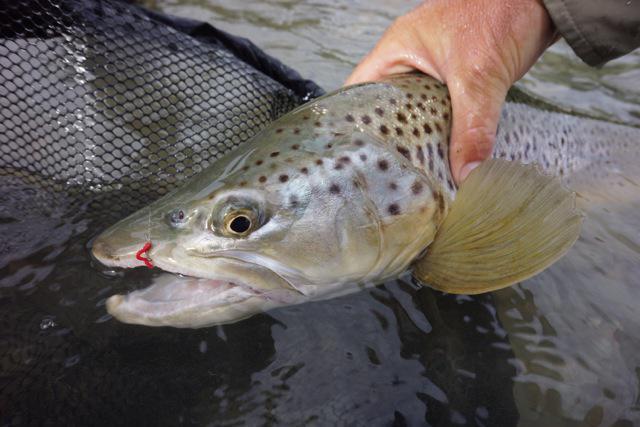 There are several ways to hook a hook:
There are several ways to hook a hook:
With a ring, piercing the tail and head alternately;
Under heads;
A bunch, gathering several larvae together.
The first method allows you to fix the bait on the hook more compactly. It is not easy for the fish to pick it off and will have to swallow it whole, which is only good for the fisherman.
You need to hook it under the head very carefully. The larva is very tender, and such a bait is easily damaged.
All in a bundle
The bait of a bloodworm in a bunch is more suitable for fishing in the warm season. There is plenty of biting, the fish is more active, and there are practically no questions about how to wash bloodworms in the summer. If it is not possible to get it yourself, feel free to go to the market. The main thing is to choose fresh, without the admixture of clay and soil.
The stores sell a special device puchkovyaz. With it, the bloodworm can be tied into a tube or a bundle. They are fixed together with a silicone cambric, for which they cling to a hook. The bloodworm is a very fragile bait, and the cambric helps not to damage the body of the bloodworm and does not allow it to spread in the water.
You can do without a bundle by tying the larvae manually with an ordinary thread. The main thing at the same time is not to damage the bait, because the fish reacts better to a live and moving bloodworm.
The use of artificial bloodworm
Sometimes it is difficult for anglers to find a quality bloodworm in a pet store. It either does not exist, or it is of poor quality and is suitable only for feeding, not for bait. If you don’t know how to wash the bloodworm yourself, then an artificial silicone bloodworm is suitable for fishing. In color and shape, it successfully imitates the real one. In addition, the material is well chosen. Silicone is very light, soft, elastic and very similar to live bait. 
Not so long ago, a bloodworm made of edible rubber with a smell was released on the market. A special flavor (attractant) is very attractive to fish, and in appearance it is almost impossible to distinguish it from the real one.
Well, if you didn’t find this either, you can make the bait with your own hands. It is enough to take a red rubber balloon and cut it into small strips.
Fishing in autumn
Autumn fishing has its charms. Despite the sunny days, by the evening the temperature gradually decreases and the water cools down. The fish begins to prepare for the winter: gaining fat and straying into shoals. During this period complementary foods work more effectively. Autumn catches are impressive. It's time to change the baits: the fish is actively eating, so animals prefer vegetable baits. And the bloodworm is now the main one on the menu. 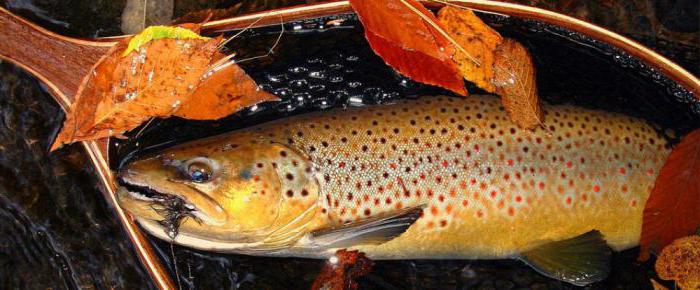
But in autumn the water becomes more transparent, and the fish become cautious and suspicious. Therefore, light tackle, miniature hooks and compact baits are in use. And a moth is the best option. The fish, not feeling a dirty trick, bites perfectly on it. The small size of the bait is well perceived by the fish, it does not alarm them. Therefore, information on how to wash bloodworms in the fall will be of interest to many. There are many ways, here is one of the simple ones.
You will need several devices: one rakes silt from the bottom, for example, a scoop with a long handle, a shovel wrapped in wire and mesh, a net with a hard rim, a bucket with many holes in the bottom and sides. Another washes either, for example, a sieve or a grate with small holes, covered for convenience with a small mosquito net. The third device is a bucket or tray of water. Although often washed in the pond itself.
So, you need to scoop up more silt from the bottom, put it in a sieve and alternately lower and raise it in a pan or bucket of water many times. Gradually, silt and other debris will go to the bottom, and bloodworms will remain in the sieve. It should be air dried a little and transferred to a storage container.
Instead of a scoop, a tin liter can with holes over the entire surface is suitable. Be sure to attach a long handle to it. It is very useful in the cold season, when silt is scooped from the polynya. Only a weight is attached to the bank for immersion in water.
And one more important fact. In autumn, more high-calorie bait is needed. Therefore, it is good to combine bloodworms with maggot or caster, corn or semolina. The fish's appetite for winter increases, and such a bait will come in handy.

